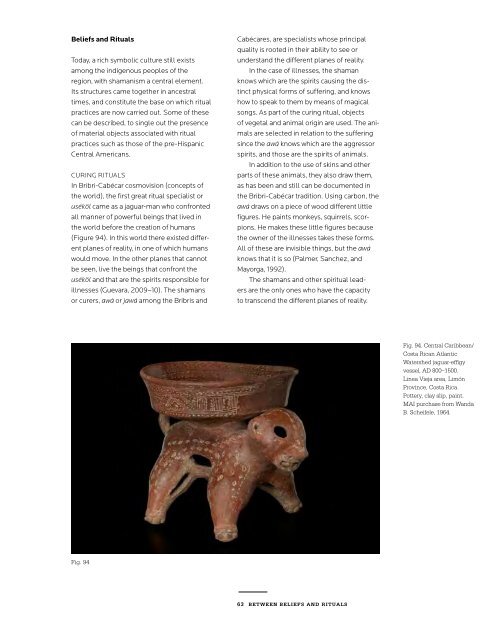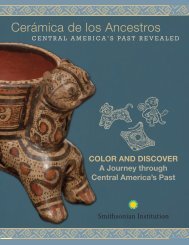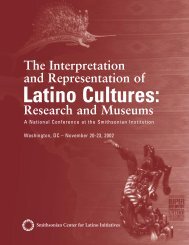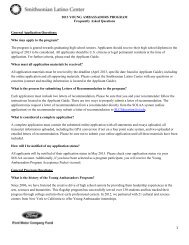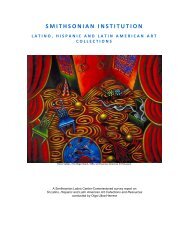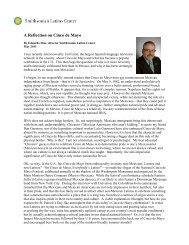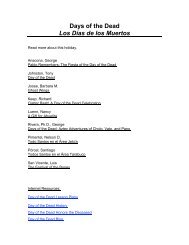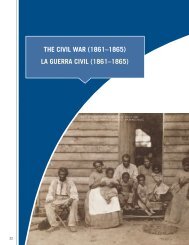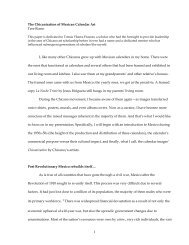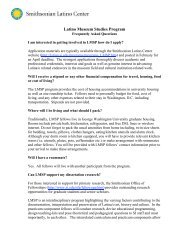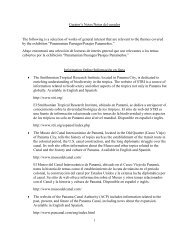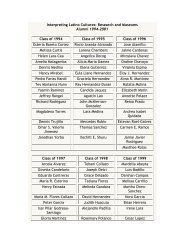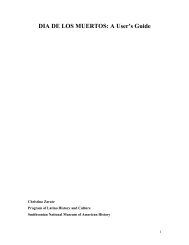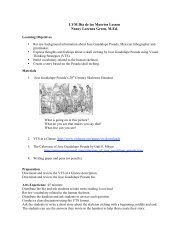Revealing Ancestral Central America - Smithsonian Latino Center ...
Revealing Ancestral Central America - Smithsonian Latino Center ...
Revealing Ancestral Central America - Smithsonian Latino Center ...
You also want an ePaper? Increase the reach of your titles
YUMPU automatically turns print PDFs into web optimized ePapers that Google loves.
Beliefs and Rituals<br />
Today, a rich symbolic culture still exists<br />
among the indigenous peoples of the<br />
region, with shamanism a central element.<br />
Its structures came together in ancestral<br />
times, and constitute the base on which ritual<br />
practices are now carried out. Some of these<br />
can be described, to single out the presence<br />
of material objects associated with ritual<br />
practices such as those of the pre-Hispanic<br />
<strong>Central</strong> <strong>America</strong>ns.<br />
curing rituals<br />
In Bribri-Cabécar cosmovision (concepts of<br />
the world), the first great ritual specialist or<br />
uséköl came as a jaguar-man who confronted<br />
all manner of powerful beings that lived in<br />
the world before the creation of humans<br />
(Figure 94). In this world there existed different<br />
planes of reality, in one of which humans<br />
would move. In the other planes that cannot<br />
be seen, live the beings that confront the<br />
uséköl and that are the spirits responsible for<br />
illnesses (Guevara, 2009–10). The shamans<br />
or curers, awá or jawá among the Bribris and<br />
Cabécares, are specialists whose principal<br />
quality is rooted in their ability to see or<br />
understand the different planes of reality.<br />
In the case of illnesses, the shaman<br />
knows which are the spirits causing the distinct<br />
physical forms of suffering, and knows<br />
how to speak to them by means of magical<br />
songs. As part of the curing ritual, objects<br />
of vegetal and animal origin are used. The animals<br />
are selected in relation to the suffering<br />
since the awá knows which are the aggressor<br />
spirits, and those are the spirits of animals.<br />
In addition to the use of skins and other<br />
parts of these animals, they also draw them,<br />
as has been and still can be documented in<br />
the Bribri-Cabécar tradition. Using carbon, the<br />
awá draws on a piece of wood different little<br />
figures. He paints monkeys, squirrels, scorpions.<br />
He makes these little figures because<br />
the owner of the illnesses takes these forms.<br />
All of these are invisible things, but the awá<br />
knows that it is so (Palmer, Sanchez, and<br />
Mayorga, 1992).<br />
The shamans and other spiritual leaders<br />
are the only ones who have the capacity<br />
to transcend the different planes of reality.<br />
Fig. 94. <strong>Central</strong> Caribbean/<br />
Costa Rican Atlantic<br />
Watershed jaguar-effigy<br />
vessel, AD 800–1500.<br />
Linea Vieja area, Limón<br />
Province, Costa Rica.<br />
Pottery, clay slip, paint.<br />
MAI purchase from Wanda<br />
B. Scheifele, 1964.<br />
Fig. 94<br />
63 between beliefs and rituals


